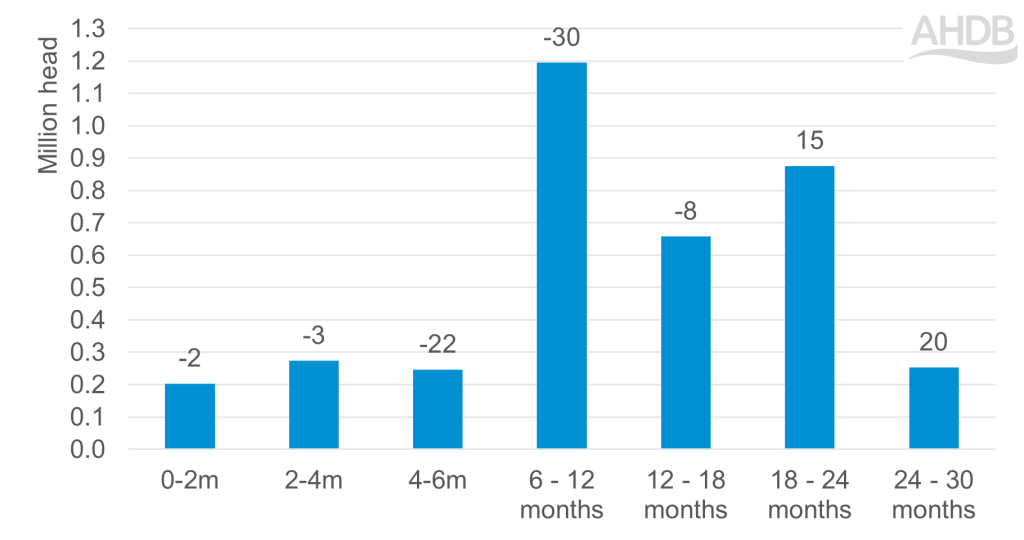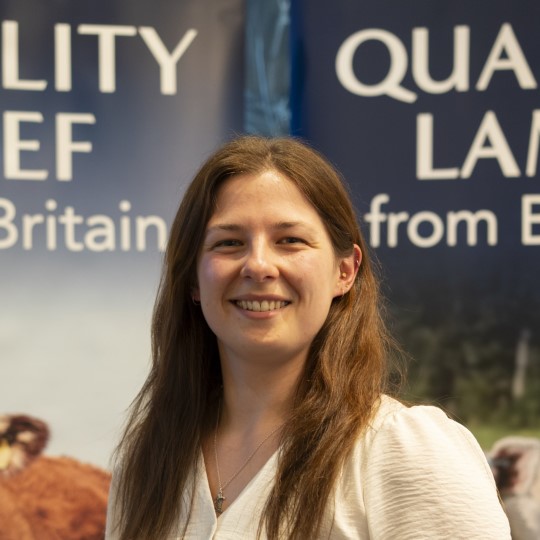Beef market update: BCMS data continues to point to longer term supply reductions
Thursday, 7 March 2024
The latest view of BCMS data continues to point to future tightening in GB cattle supply. We explore the latest figures and what they mean.
Key points
- The latest data suggests more cattle could be available for slaughter during the first half of 2024
- Birth registrations data and youngstock numbers point to cattle supply reductions by 2025
- Fall in birth registrations in 2023 driven by contracting suckler herd
As of the 1 January 2024, the number of cattle on holdings in GB stood at 7.67 million head. This was 1.2% (89,700 head) lower than the same point a year ago.
Data points to slightly greater cattle availability in 2024, particularly in the first half
For a closer view of beef cattle supply in the near-term, the number of animals aged 12-30 months old (excluding dairy heifers) remained slightly more plentiful year-on-year, up 26,500 head (+1.5%) at 1.79 million. The uplift was mostly due to more cattle aged 18-30 months old, and particularly those aged 24-30 months. These trends suggest that we may see greater cattle availability in the first half of the year in particular.
Year-on-year change in GB cattle population by age and type, 1 Jan 2024 vs 1 Jan 2023

Source: BCMS, AHDB calculations. Data includes beef males and females, plus dairy males
Looking at recent kill levels, prime cattle slaughter was particularly low through December, potentially due to impacts of poor weather on finishing times. Kill levels through the first few weeks of 2024 had been fairly stable overall. However, since mid-February throughputs have indeed begun to pick up, potentially as delayed autumn finishing cattle come to market.
As noted in our beef market outlook, we would expect heifer supply to be supported in 2024 against continued contraction of the suckler herd.
Cattle numbers look lower into 2025
Meanwhile, numbers of younger cattle have begun to tighten. In our previous article looking at data from 1 October 2023, we noted a 50,600 head (-4.6%) reduction in the number of animals (excluding dairy heifers) on the ground aged under 6 months old. Three months on, these changes have carried through.
As of 1 January 2024, the number of cattle aged under 12 months old was down by 57,500 head year-on-year (-2.9%).
Within this, the number of 6–12-month-old cattle fell by 30,100 head, while those aged under 6 months contracted by 27,400 head on the year. Looking more closely at the latter age group, the reduction was mostly driven by fewer 4-6-month-olds.
Number of cattle (beef animals + dairy males) in GB on 1 Jan 2024 by age, with year-on-year change (in 000 head)

Source: BCMS, AHDB calculations
Suckler herd drives decline in registrations
The cattle population data reflects trends in birth registrations. For the full year of 2023, calf birth registrations (excluding dairy heifers) fell by 52,600 head (-2.5%) to 2.07 million. This is the steepest annual fall in birth registrations since 2013.
The fall was entirely driven by fewer registrations to the suckler herd, as dairy-beef calf registrations continued to rise. Registrations of dairy bulls (and heifers) continued to fall.
Exactly when these reductions in cattle supply will be realised in weekly cattle availability / slaughter levels also depends on several other factors (sex, breed, production system, input costs and suckler replacement requirements to name a few). However, present data points to potentially rather notable reductions in finished cattle supply in 2025.

Sign up for regular updates
You can subscribe to receive Beef and Lamb market news straight to your inbox. Simply fill in your contact details on our online form.
While AHDB seeks to ensure that the information contained on this webpage is accurate at the time of publication, no warranty is given in respect of the information and data provided. You are responsible for how you use the information. To the maximum extent permitted by law, AHDB accepts no liability for loss, damage or injury howsoever caused or suffered (including that caused by negligence) directly or indirectly in relation to the information or data provided in this publication.
All intellectual property rights in the information and data on this webpage belong to or are licensed by AHDB. You are authorised to use such information for your internal business purposes only and you must not provide this information to any other third parties, including further publication of the information, or for commercial gain in any way whatsoever without the prior written permission of AHDB for each third party disclosure, publication or commercial arrangement. For more information, please see our Terms of Use and Privacy Notice or contact the Director of Corporate Affairs at info@ahdb.org.uk © Agriculture and Horticulture Development Board. All rights reserved.

